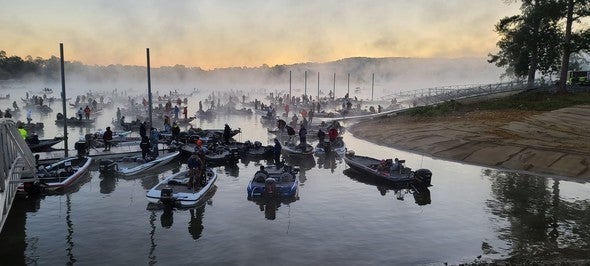By Lanier Clegg, Junior Public Affairs Specialist with the U.S. Fish and Wildlife Service
Hank Weldon is a native Alabamian, born in the state 36 years ago. He’s also a traveling man; as director of student and junior tournaments for Bass Anglers Sportsman Society, he’s seen a lot of fishing spots.
Few, he said, can rival those found in his home state.
“If you want to go fish deep clear water, you can do it,” said Weldon, who works for a nonprofit organization that promotes angling for America’s most popular freshwater game fish. “If you want to go fish shallow muddy water, you can do it. It’s all within the state and it’s all good fishing, no matter where you go.”
Part of Alabama’s appeal as an angling hot spot can be traced to a federal funding program overseen by the U.S. Fish and Wildlife Service.
The program is called the federal Sport Fish Restoration Program. It is authorized by the Sport Fish Restoration Act. The money is generated from taxes charged on fishing tackle and boat fuel. The funds pay for fisheries projects, building boat ramps, docks and other related needs on public waterways.
The program apportions money to states in a formula that pays 75% of the costs for approved projects. In Alabama, that means the state received $6.5 million from the program this year.
From that sum, 15% – almost $1 million – was set aside specifically for public boating access facilities. From that, 60% will pay for new construction; the remaining amount will fund operations and maintain established access sites.
In real numbers, that means Alabama maintains 114 freshwater access areas across the state. Each is open 24 hours a day, seven days a week. They are also free.
The state access program, created in 1957, has been a template that creates access to waterways while meeting the demands of the boating public – people like Weldon.
“You can be riding in a pontoon boat on a Sunday morning or canoeing down the Coosa River,” he said, “It can be so peaceful and tranquil and can get you away from the business of life.”








